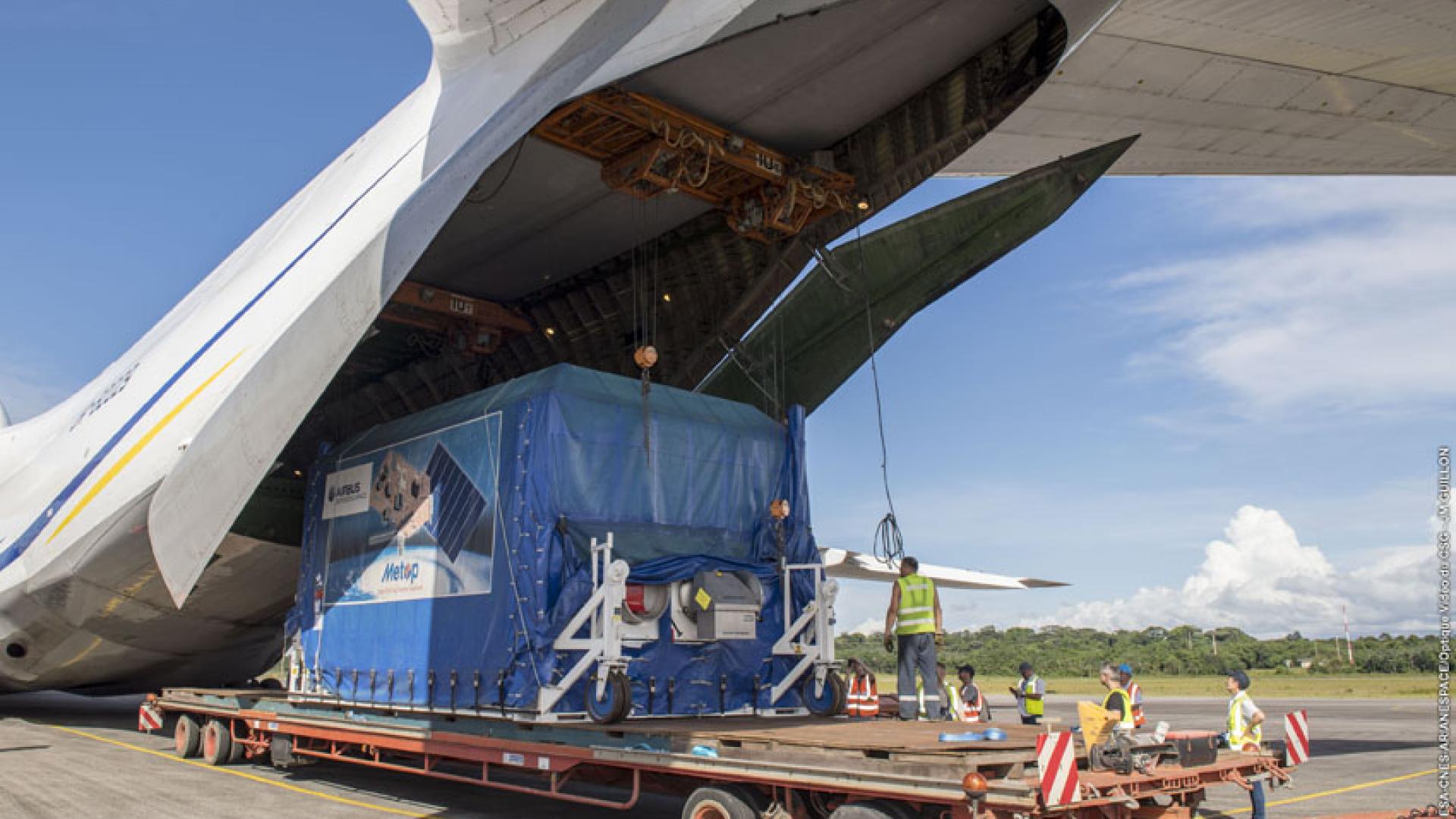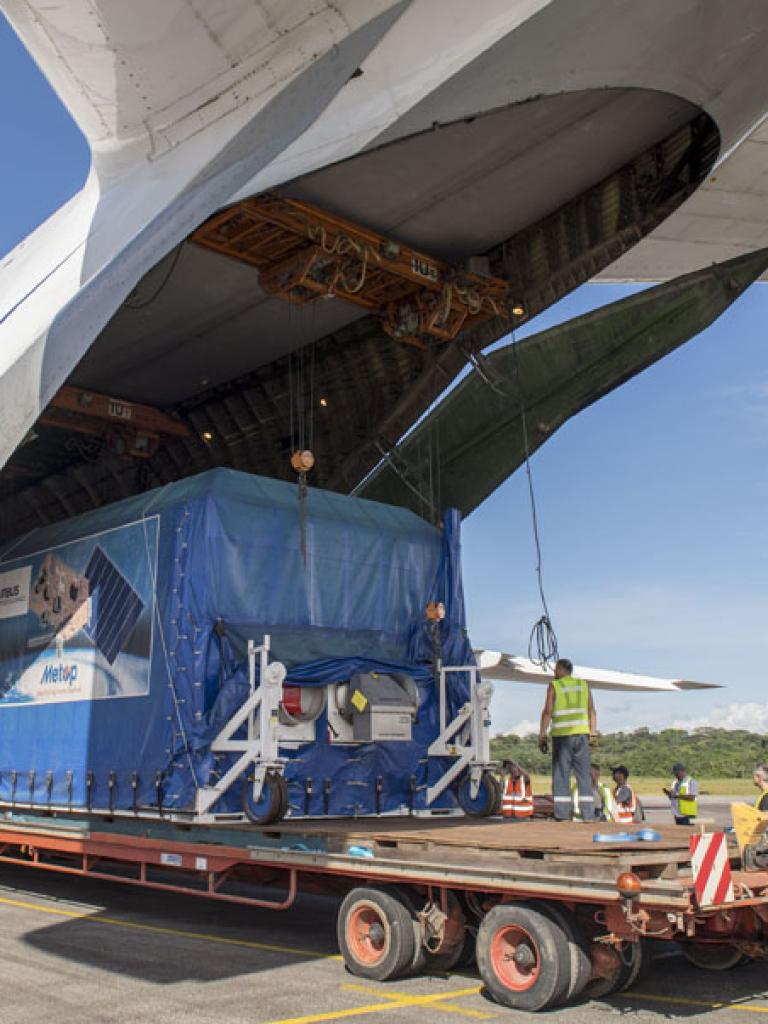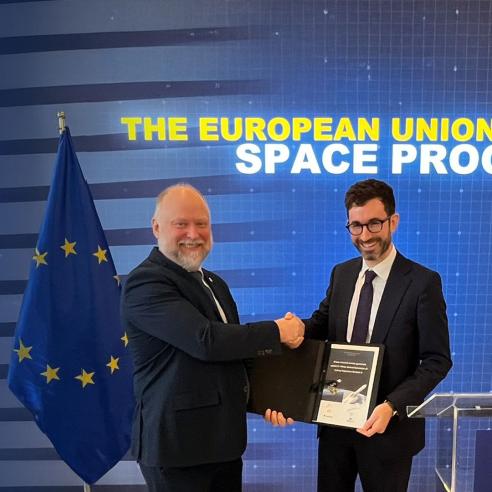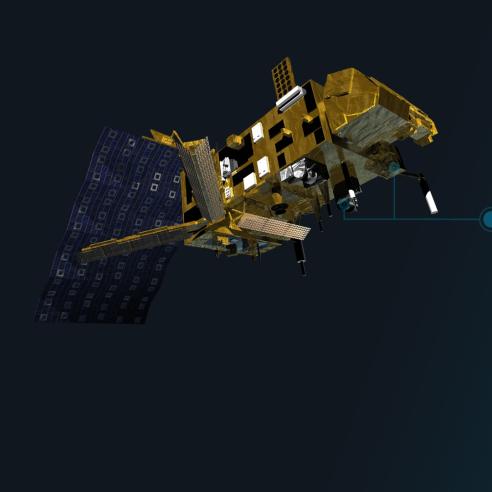
Preparing for launch!
Metop-C arrives in Kourou


Metop-C, the third and final satellite in a series that has made an unparalleled impact on weather forecast accuracy, has arrived in Kourou, French Guiana, to be prepared for launch.
09 August 2021
04 July 2018
Three massive Antonov 124-100M aeroplanes – one of the largest types of aircraft in the world – transported the satellite and ground support equipment to Kourou.
Metop-C is the third satellite in the EUMETSAT Polar System programme. It was built for EUMETSAT by the European Space Agency and European industry.
It was transported from the its final assembly and testing site at Airbus facilities in Toulouse, France.

A delicate process
Metop-C’s major components – the payload module, the service module and its solar arrays were transported inside the Antonov in special containers ensuring a safe and well-controlled environment for its sensitive space flight hardware.
They were unloaded on to heavy-load trucks through the stern and nose of the Antonov planes to be taken by road in a special convoy to the European Space Port CSG in Kourou.
Transfers were arranged after sunset to ensure that the delicate hardware, in particular the satellite flight batteries, did not heat up under the strong Sun of French Guiana.
After arriving safely in a dedicated payload preparation facility at CSG, the payload module has already been mated with the service module – a complex step of mechanical and electrical integration.
Testing time
With the solar arrays to be mounted later, the satellite itself is now powered from the ground support equipment and will undergo a series of further integration and functional testing to ensure that all elements, particularly the meteorological and scientific instruments, properly survived transport.
Throughout these tests, the instrument suppliers, including EUMETSAT’s partners from NOAA / NASA and CNES are present with the main industrial teams from Airbus and its sub-contractors.
The Launch and Early Operations Phase Control Centre at ESOC and EUMETSAT´s Mission Control Centre – both located in Darmstadt, Germany – will also listen in to the telemetry provided by the satellite during this phase to ensure that everything is correct and remains well calibrated.
While the satellite is reassembled for its final journey into space, preparations for the three-day critical operations phase after it separates from the Soyuz/Fregat launch vehicle are going on at ESOC.
Launch and early operations
The team at ESOC will bring Metop-C on its way to its final operational orbit in a planned tri-star satellite constellation with Metop-A and -B. This is called the launch and early operations phase (LEOP).
Meanwhile, at EUMETSAT, preparations continue to take over operation for Metop-C from ESOC after the LEOP in order to support the commissioning of the instruments on board the satellite.
This is typically a six-week activity during which the proper operation of the satellite and its instrumentation is verified.
Then follows a longer period of careful calibration and validation of the data delivered by all instruments to ensure that Metop-C can provide continuity of the high-quality level data products from Metop-A and –B, which are already in orbit and have proven so indispensable for weather prediction and climate research.
With Metop-C now planned for launch on the 6 November from CSG, Kourou, which is experiencing an unprecedented schedule of launches up until the end of the year, the satellite integration teams for Metop-C are planning a short interruption of activities from mid-August to mid-September, after which they will restart final activities leading up to the launch.
Click here for more photos from the arrival of the satellite at the launch site in Kourou.

